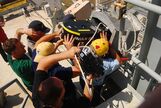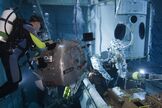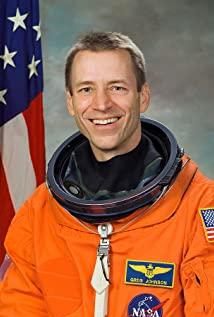1. The earth is a planet. The so-called planet generally refers to a celestial body that does not emit light and revolves around a star. The moon is a satellite of the earth, and the two form a simple celestial system. The diameter of the earth is 12,742 kilometers.
2. The sun is a main star, and its gravity captures 8 planets to revolve around it, thus forming a stable celestial system - the solar system. The diameter of the sun is 109 times that of the earth and the volume is 1.3 million times that of the earth.
3. The solar system belongs to the Milky Way. The Milky Way is a barred spiral galaxy with a diameter of 100,000 light-years and about 100 billion --- 4 stars. Our solar system sits on a swirling arm in the outer reaches of the Milky Way called the Orion or Local Arm.
4. The Milky Way belongs to the Local Group of galaxies. The Local Group of Galaxies refers to a smaller group consisting of 50 galaxies such as the Milky Way, the neighboring Andromeda Galaxy and the Magellanic Cloud, and a group of galaxies including the Milky Way. All galaxies in the Local Group cover an area about 10 million light-years across.
5. The local group of galaxies belongs to the Virgo supercluster, which contains about 100 galaxy groups and galaxy clusters. The Virgo galaxy cluster is located at its center and covers an area of about 110 million light-years in diameter.
6. The Virgo Supercluster belongs to a larger supercluster: the Laniakea Supercluster. The Virgo Supercluster contains 100 galaxy groups, and existences like the Milky Way have as many as 1,300 to 2,000, occupying a space of about 100 million light-years in diameter, but this is only one-fifth of the diameter of Laniakea . The entire Laniakea area is 25 times the size of the Virgo Supercluster and contains 100,000 galaxies.
7. The Pisces–Cetus Supercluster Complex is a local supercluster, the Virgo Supercluster (including the Local Group of galaxies in the Local Group (the group of galaxies where the Milky Way) is located). superclusters) superclusters or large-scale fibrous structures.
8. The Hercules-Corona Borealis Great Wall (English: Hercules-Corona Borealis Great Wall) is a huge superstructure of galaxies in the universe, extending over 10 billion light-years, the largest known structure in the observable universe.
9. Universe > Total Galaxies > Observable Universe > Galaxies > Hercules-North Pluto Great Wall > Pisces-Cetus Supercluster Complex > Laniakea Supercluster > Virgo Supercluster > Local Group of Galaxies > Milky Way Sub Group > Milky Way > Orion Arm > Gould Belt > Local Bubble > Local Interstellar Cloud > Oort Cloud > Solar System > Heliosphere > Inner Solar System > Earth-Moon System > Earth.
10. The above contents are copied and pasted.
11. The earth is too small. For the vast universe, the earth does not even count as an ant. The existence of humans is meaningless to the universe, and the existence and destruction of galaxies is meaningless. Maybe even the destruction of the entire local galaxy group is just a small wave in the turbulent river.
12. What is the purpose of our life? A short life is only a hundred years, so what does it count in this vast universe?
View more about Hubble reviews











